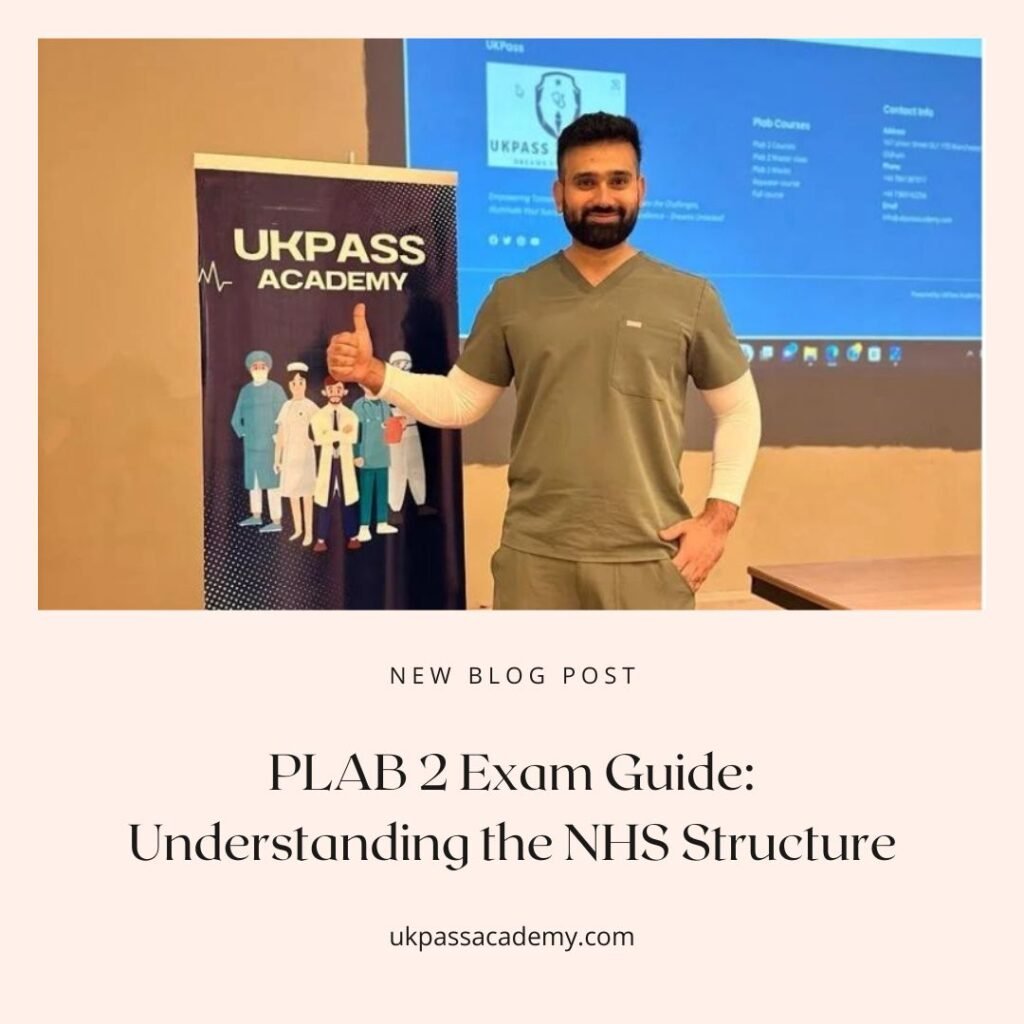Hello everyone, Dr. Zeeshan here, and today I’ll be discussing an essential topic for PLAB 2 exam candidates: understanding how the NHS is organized. This knowledge is crucial not just for passing your exams but for navigating your medical career in the UK effectively. Let’s dive into the details.
Introduction to the NHS
The National Health Service (NHS) in the UK is renowned for providing free healthcare funded through national taxes. This means patients do not pay directly at the point of use, reflecting the government’s oversight in running this essential service.
Primary vs. Secondary Care
The NHS is broadly divided into primary and secondary care:
Primary Care (General Practice)
General practitioners (GPs) or family doctors form the backbone of primary care. They manage a wide range of health issues within the community, including chronic conditions like diabetes and hypertension. GPs can conduct basic investigations such as blood tests and x-rays but refer patients needing advanced imaging like CT scans or MRIs to secondary care.
What GPs Can and Can’t Do
- Manage chronic conditions and acute illnesses within the community.
- Conduct basic investigations like blood tests and x-rays.
- Refer patients to specialists in secondary care for more detailed assessments and treatments.
Two-Week Wait Referral
A critical process in primary care is the “Two-Week Wait Referral,” designed for patients suspected of having cancer. GPs initiate this referral pathway to ensure timely assessment and management by specialist teams in secondary care.
Secondary Care Services
In contrast to primary care, secondary care operates within hospital settings and includes emergency departments (known as A&E in the UK), surgical units, maternity services, and acute medical wards. Here, patients receive specialized care requiring hospitalization or emergency treatment.
Services Offered in Secondary Care
- Emergency medicine
- Acute surgery
- Obstetrics and gynecology
- Specialist medical and surgical treatments
Tertiary Hospitals and Specialized Services
Tertiary hospitals, often linked with universities, provide advanced services such as neurosurgery, cardiothoracics, and plastic surgery. These hospitals receive referrals from both primary and secondary care settings for complex cases requiring specialized expertise.
NICE Guidelines
The National Institute for Health and Care Excellence (NICE) develops evidence-based guidelines to standardize treatment protocols across the NHS. These guidelines are essential for ensuring consistent and high-quality healthcare delivery nationally, though their implementation may vary locally based on population needs and resources.
Social Services and Safeguarding
Social services in the UK support vulnerable populations, including the elderly and children at risk. Healthcare professionals play a crucial role in safeguarding vulnerable individuals by reporting concerns to social services for further investigation and intervention.
Key Responsibilities in Safeguarding
- Recognizing signs of abuse or neglect in patients.
- Making safeguarding referrals to protect vulnerable individuals.
Local Policies and Induction
Each NHS organization operates under specific local policies and procedures. As a junior doctor, you’ll undergo comprehensive inductions at each new placement to familiarize yourself with local guidelines, including those for social services and safeguarding.
Conclusion
Understanding the structure and function of the NHS is vital for PLAB 2 exam success and your future medical practice in the UK. For more in-depth learning, explore the resources we’ve linked in the description. Stay tuned for more valuable insights and tips from UKPASS Academy to excel in your medical career.
Thank you for joining me today, and remember, your knowledge of NHS organization is key to providing excellent patient care.

